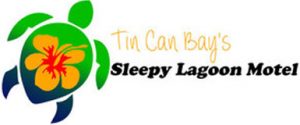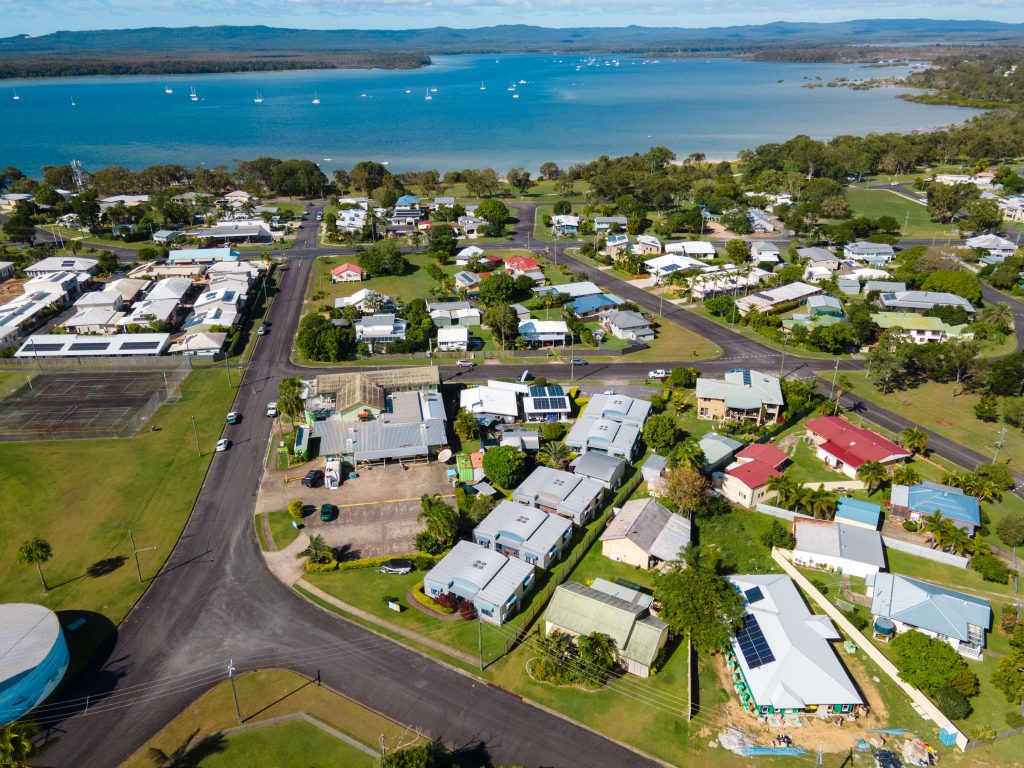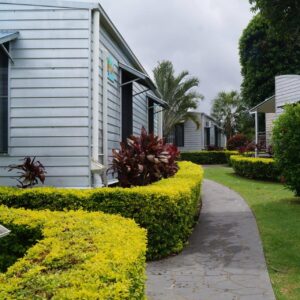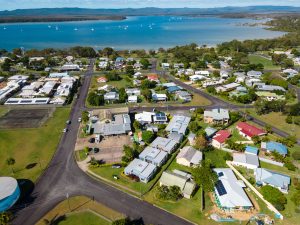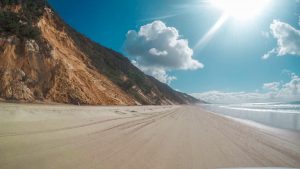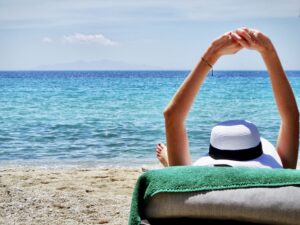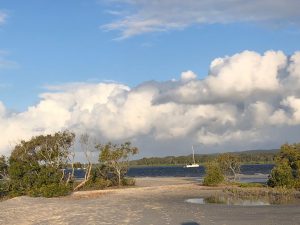5 Things You Didn't Know About Tin Can Bay
Tin Can Bay is a quaint, coastal town situated in the south eastern region of Queensland. Renowned for its calm waters, white sandy beaches, and friendly host of locals, this underrated holiday destination doesn’t get nearly as much credit as it should!
Tin Can Bay is loaded with cultural and local history and provides a range of fun and exciting activities that the whole family can enjoy. From surfing and fishing, to dolphin feeding and eateries, there’s no shortage of must-see places in town!
There are also a number of fantastic attractions and historical locations that even some of the locals may not be aware of… Visiting the area soon? Here are 5 things you probably didn’t know about Tin Can Bay.

1. How Did Tin Can Bay Get its Name?
The town was built on land originally purchased from the Kabi Kabi people in 1882. In the same year, a shipping channel was cut through to provide access to Gympie and Maryborough.
In 1947 Tin Can Bay was officially named after one of its best features – huge man-made booms that were constructed in 1945 from surplus metal from World War 2. The booms collected tin cans washed down rivers and out to sea from early settlement years. As all manner of goods would wash up against these barriers, they were referred to as ‘tin can’ or ‘tinny’ barriers. This name has since stuck and is now proudly displayed on road signs pointing towards the town!
2. What's the Difference Between Tin Can Bay, Tinnanbar, and Wonga Beach?
There are three towns that make up this uniquely-named area, all running along the coastline of Cooloola. They are Tin Can Bay (the main township), Tinnanbar and Wonga Beach.
While they’re all located within the same region, they each have their own individual personalities which contribute to making this destination so great!
Located approximately halfway between Noosa Heads and Rainbow Beach, it is only natural that Tin Can Bay is favoured as a holiday retreat for families who live in these southern regions of Queensland. The town provides clean beaches, crisp blue water represented with deep sea fishing charters, scuba diving expeditions, and dolphin tours, all of which can be experienced throughout the year.
Tin Can Bay is also known for its various other attractions including; koala and wildlife parks, art galleries, lavender farms (the flowers are used to produce essential oils), two caravan parks brimming with echidnas, emus and wallabies for you to feed, an 18 hole championship golf course, a fabulous bakery, and even a microbrewery where you can sample some of their award-winning brewed beverages!
Like Tin Can Bay, Tinnanbar is also bustling with natural beauty while Wonga Beach offers tourists serenity at one of the cutest beaches in Queensland.

3. The History Behind Tin Can Bay's Booms
The biggest attraction in Tin Can Bay is its man made booms. These booms run for 3 kilometres out into Pumicestone Passage and are covered with everything from bottles, to timber, to cars! Luckily, the tide comes in every 12 hours to wash away any rubbish that has collected on top of them so they can be enjoyed by all.
As mentioned above, these booms were set up in 1945 after the Second World War when vast numbers of military equipment was disposed of around this area. They were put in place to collect large items floating down rivers and out to sea before they reached Brisbane or Moreton Bay. Since then, they have gathered more than 1 million tonnes of materials which provides locals and visitors plenty of fascinating opportunities for fishing, snorkeling, and scuba diving!
4. The Lighthouse Keepers of Tin Can Bay
The first lighthouse was constructed atop the headland at Wonga Point in 1873 after a number of shipping disasters occurred around these parts. As well as being a source of warning for ships coming too close to the coastline, it also proved to be an ideal facility for housing government officials overseeing the tin mining industry that was beginning to flourish further south in Queensland. In fact, during the next 10 years almost every town from Brisbane to Bundaberg had been established by private enterprise because of this rich mineral abundance .
Today there are two lighthouses standing on either side of Pumicestone Passage which provide safe passage through this treacherous area for mariners. Both lighthouses are fully automated and open to the public, with Pumicestone Passage Lighthouse (on the Tin Can Bay side) providing tours every hour from 10am-2pm Wednesday, Saturday and Sunday.
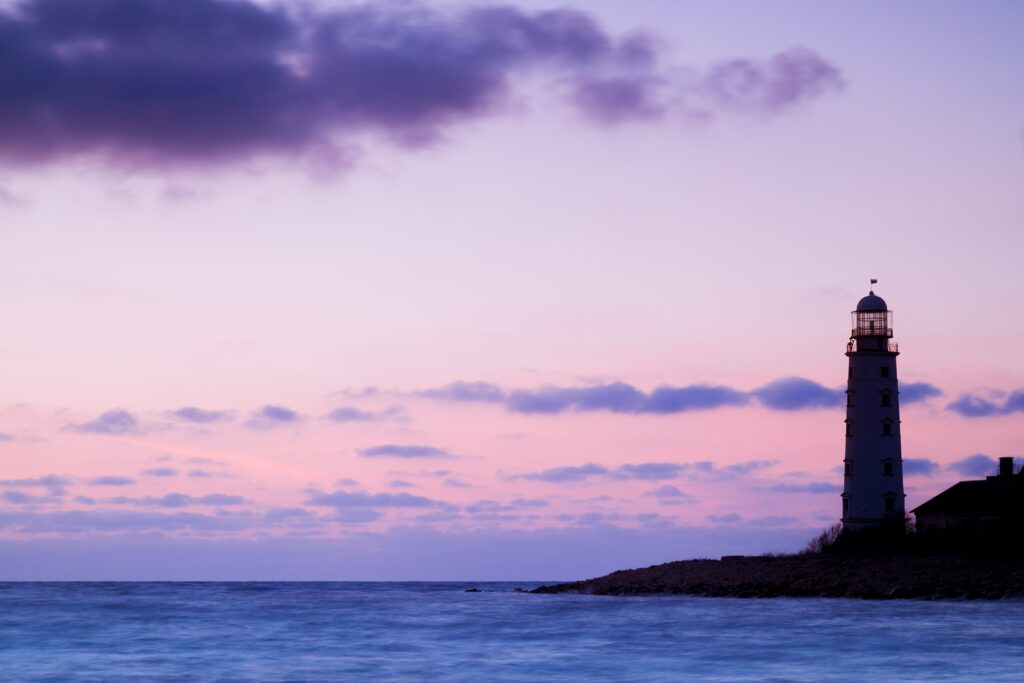
5. The Drive Towards Tin Can Bay
The drive to Tin Can Bay is a coastal adventure of its own! As you leave Gympie and head south, the road twists and turns through dense forest and along the waterfront before opening up to reveal vast expanses of countryside dotted with pretty little townships. With signs pointing towards each of these seaside locations, it is impossible not to want to stop and explore some of them while travelling at high speed or crawling along in peak hour traffic! You can experience this trip for yourself on the Queensland High Country Holiday Map .
Another notable thing about this drive is that there are four tunnels at various points on your way down south; one just outside Imbil, then another three around Traveston, and finally one in Tin Can Bay!
Enjoy Tin Can Bay During Your Stay at Sleepy Lagoon Motel
Sleepy Lagoon Motel is a family-run business based centrally in Tin Can Bay. We provide comfortable and convenient accommodation to all travelers visiting the area. Our expertise of the area means we can help ensure you make the most of your stay! View available accommodation or book your stay online today.
